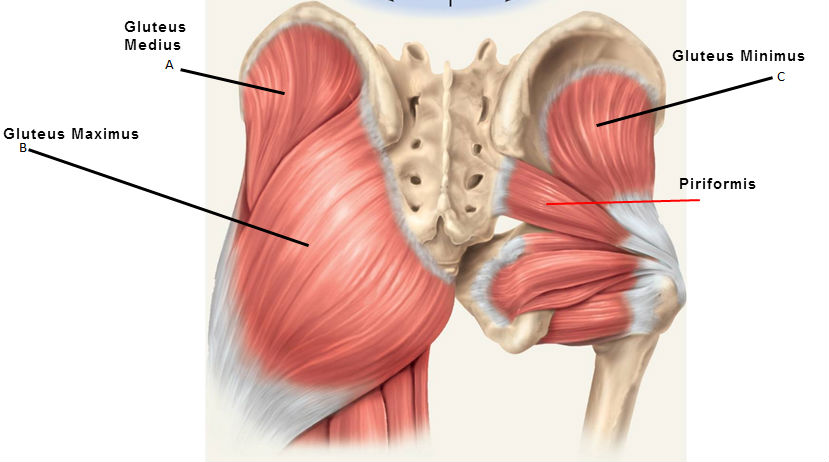Piriformis Syndrome
Mark Green
Why does such a small muscle cause so many problems?
Piriformis syndrome is a somewhat controversial diagnosis of a neuromuscular disorder which is related to the sciatic nerve. According to the terms of the syndrome, the sciatic nerve becomes compressed or otherwise irritated by the piriformis muscle causing pain, tingling and numbness in the hip/ buttocks and along the path of the sciatic nerve descending the lower thigh and into the leg.
It is one of the few conditions which causes posterior hip pain.
The piriformis muscle is one of 6 small muscles deep in your gluteal region. It is also one of only three muscles which connect your legs to your spine.
The piriformis muscle originates on the front portion of the sacrum, the triangular bone wedged between the two hip bones, passes under the greater sciatic notch (an opening of the pelvis) and attaches to the top of the greater trochanter, a bony prominence on the outside of the femur (thigh) bone.
The piriformis muscle is involved in a number of actions. It assists in turning the foot out, drawing the leg away from the body when the leg is flexed and extension of the hip joint. Contraction of the piriformis muscle moves the body in different directions depending on the position your body is in.
If the sacrum is stable (sitting) pirifoirmis helps to turn the leg out, but if the leg is fixed (standing), Piriformis helps to stabilise or move your pelvis. It is an amazing thing when your think of how many muscles, bones, ligaments and tendons are involved in every movement we make. Nothing happens in isolation.
What are the Symptoms of Piriformis Syndrome?
You may experience one or more of the following symptoms:
- Pain is usually felt in one buttock – but you may experience a radiation of pain down the back of the leg (sciatica)..
- Pain aggravated by hip activity, eg walking, running or prolonged sitting.
- Sometimes, you will start to walk or run with your foot turned out due to shortening of the piriformis muscle.
What Causes Piriformis Syndrome?
Piriformis syndrome is most commonly caused by your piriformis muscle overworking.
The main reasons that it overworks is due to:
- protection or dysfunction of the adjacent Sacroiliac or hip joints.
- weakness of your deep hip stability muscles.
- Poor movement patterns (running technique)
How is Piriformis Syndrome Diagnosed?
In most cases a physiotherapist can perform some clinical tests to determine whether the source of your glute pain is coming from piriformis, your lower back, or possibly your hip joint.
Sometimes a CT Scan or MRI might be used to help in the diagnosis. Predominantly to help rule out the other causes of glute pain which mimic piriformis syndrome.
What is the Treatment for Piriformis Syndrome?
Once your diagnosis is established, treatment could involve any of the following:
- Pelvis and spine re-alignment techniques.
- Joint mobilisation to restore normal joint mobility, range of motion and function.
- Massage to help decrease pain and spasm in your piriformis and increase blood flow plus soft tissue extensibility.
- Stretches to help with the muscle length and flexibility
- Acupuncture or Dry Needling to reduce muscle tightness around the buttock.
- Deep core stability and hip strengthening exercises to stabilise your hip, pelvis and spine.
What can you do to reduce your glute pain?
If you think your piriformis might be causing your glute pain, then my suggestion would be to start a regular routine of stretching the piriformis and using a trigger point ball to help release the muscle.
As well as the specific piriformis stretch shown at the top of this post, you can also get a lot of relief from mobilising the sciatic nerve using the Richard Simmons and Calf Neural Mobilisation.
How can you prevent piriformis syndrome?
There are a number of potential causes of piriformis syndrome, which makes preventing it a difficult task. The most obvious cause I have seen in runners is poor running technique. In particular, overstriding. If you overstride when you run, piriformis has to work exponentially hard to stabilise your pelvis and extend your hip (pull your body weight forward).
The easiest and most effective habit you can adopt to reduce the stress on the piriformis muscle is to Improve Your Running Technique.
